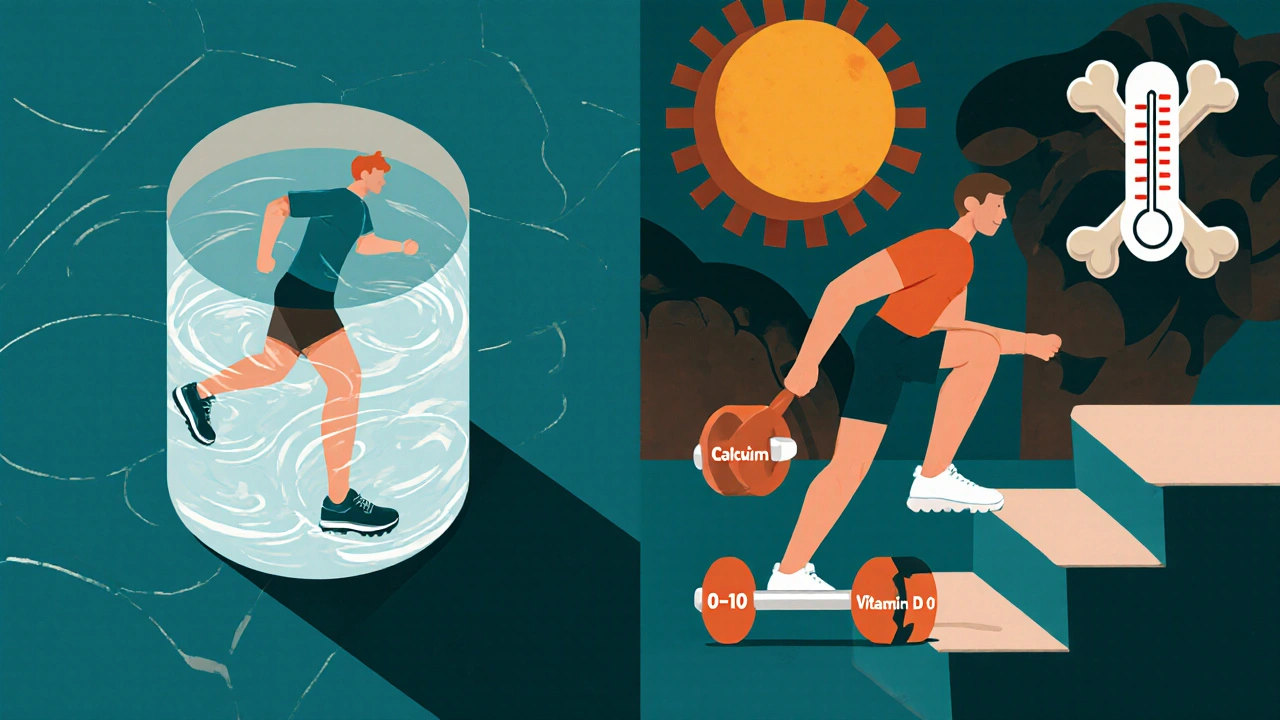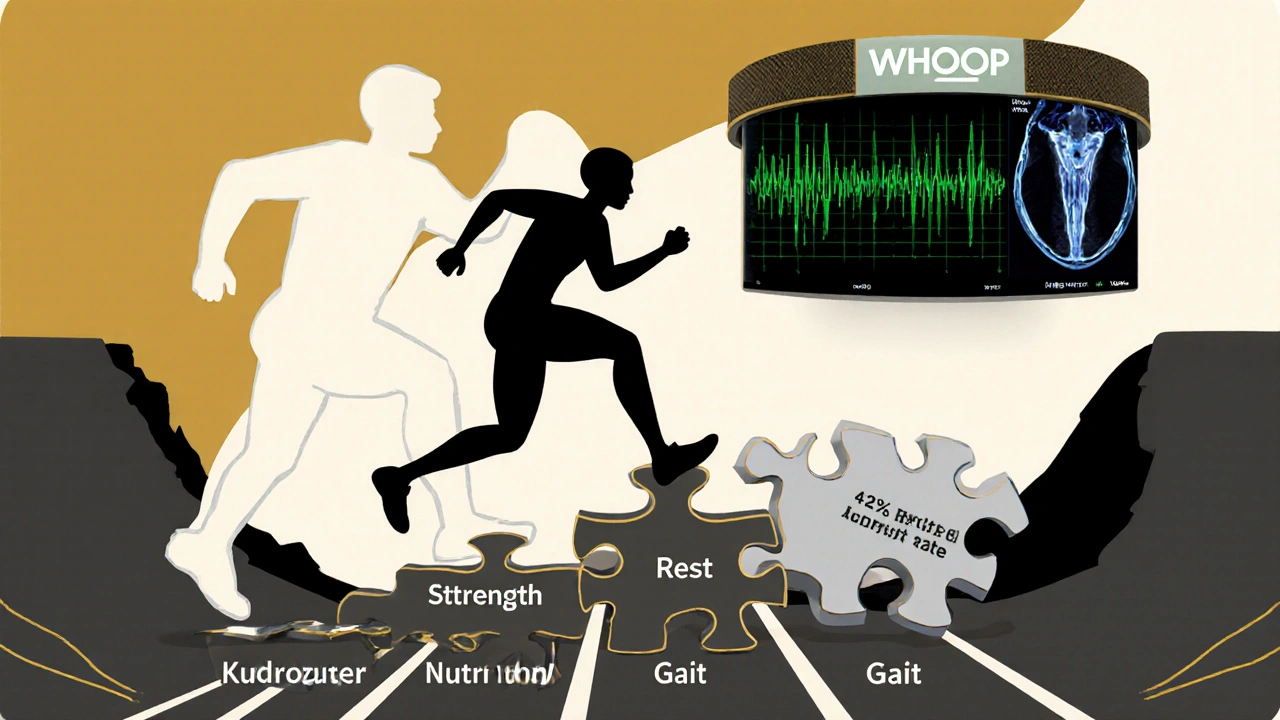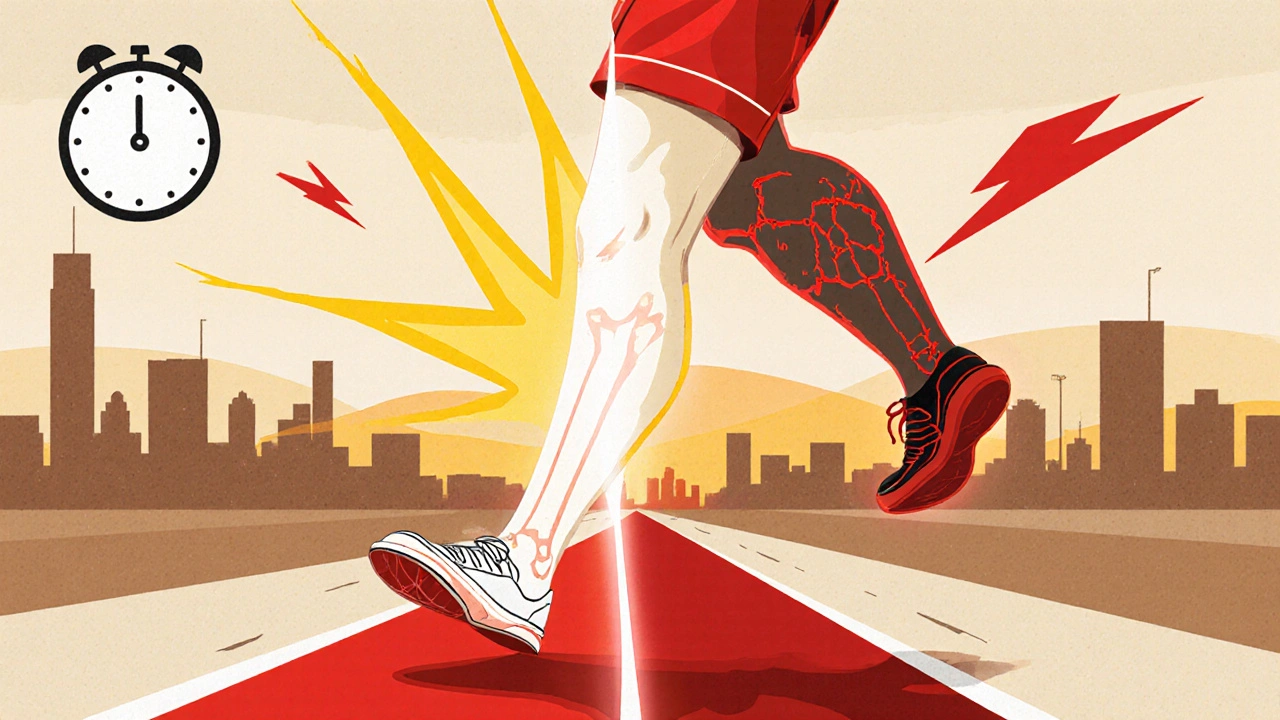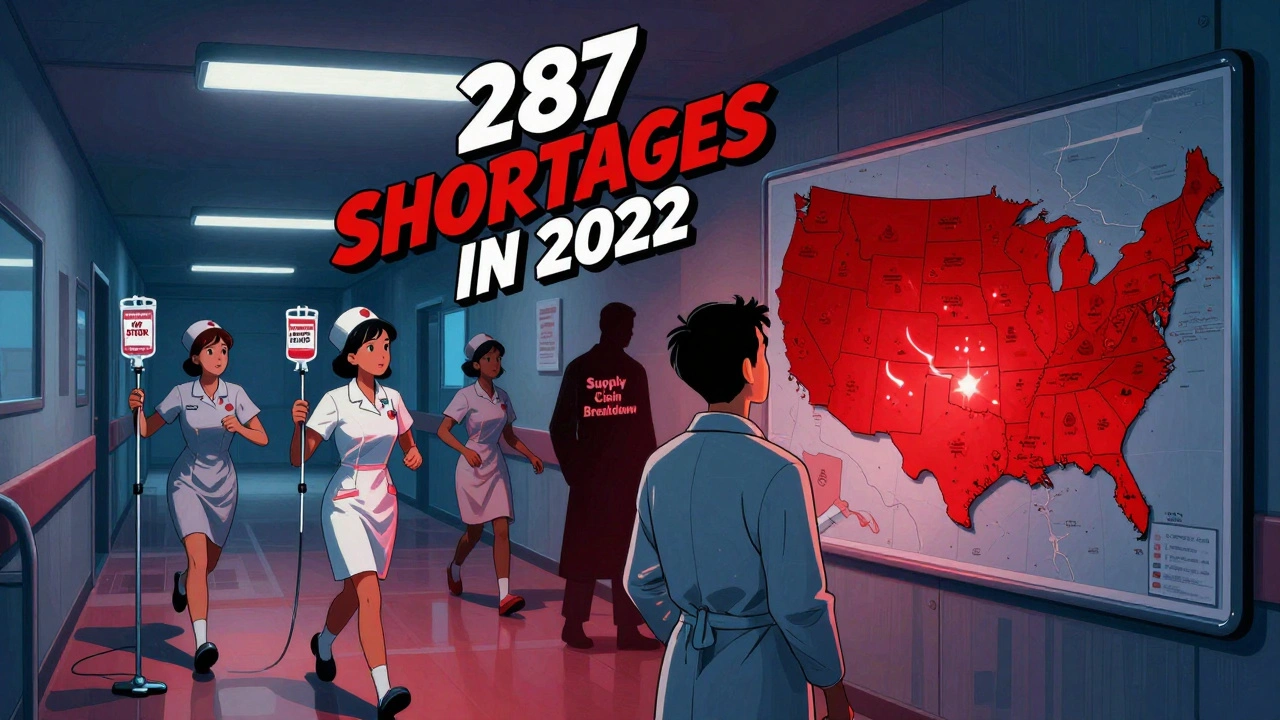Running hurts. Not the good kind of hurt-the burn in your quads after a hill session, or the tired legs after a long Sunday run. The kind that creeps up in your shins, stays there all day, and gets worse every time you lace up. If you’ve felt that dull ache along the inside of your shin, or worse, a sharp, localized pain that doesn’t go away even when you’re walking, you’re not alone. Shin splints and stress fractures are two of the most common running injuries, and they’re often confused. But treating them the same way can turn a minor setback into a months-long setback.
Shin Splints vs. Stress Fractures: What’s the Real Difference?
Shin splints, or medial tibial stress syndrome (MTSS), are a diffuse, widespread pain along the inner edge of the shinbone. It’s usually tender to touch over a few inches of bone. The pain often shows up during or right after running, and eases with rest. Stress fractures, or bone stress injuries (BSIs), are tiny cracks in the bone. The pain is sharp, pinpoint, and gets worse with activity. It might even hurt when you’re just walking or hopping on one foot.
Here’s the key: MTSS is soft tissue and bone surface irritation. A stress fracture is actual bone damage. One is a warning sign. The other is a red flag. And the return-to-run plan for each is completely different.
Studies show that about 13.6% to 20% of all running injuries are shin splints. Stress fractures are less common-2% to 16%-but far more serious. Women are at higher risk: up to 21% of female runners get them, compared to 8% of men. Why? Often, it’s not just training volume. It’s energy availability. Many female athletes with recurrent stress fractures have undiagnosed Relative Energy Deficiency in Sport (RED-S), where calorie intake doesn’t match training demands. That’s why just resting and stretching won’t fix it.
Phase 1: Stop Running. Start Healing.
First rule: Don’t run through it. That’s the biggest mistake. If you have a stress fracture, you need 4 to 6 weeks of no impact activity before even thinking about walking. Shin splints? You might get away with 7 to 10 days of reduced activity. But either way, you need to be pain-free while walking before you start anything else.
During this phase, focus on what you can do. Pool running is ideal-it keeps your cardiovascular system active without loading your bones. Cycling, elliptical, or using an anti-gravity treadmill (like AlterG) can cut recovery time by up to 27 days. These tools aren’t just for pros. Many physical therapy clinics now offer them, and insurance coverage for rehab has improved significantly since 2021.
Don’t skip the basics: ice the area for 15 minutes after activity, elevate your legs, and make sure you’re eating enough. Protein, calcium, and vitamin D aren’t optional. A 2023 study found that 31% of female runners with recurring stress fractures had low bone density because of poor nutrition, not because they ran too much.
Phase 2: Rebuild Strength-Not Just Flexibility
Most runners think stretching their calves will fix shin pain. It won’t. The real issue is weak tibialis posterior, glutes, and calves. You need strength, not just flexibility.
Start with double-leg heel raises. Stand with feet flat, rise up on your toes slowly, hold for 2 seconds, lower slowly. Do 3 sets of 15 to 20 reps daily. That’s it. No fancy gear. Just your body weight and control.
Once you can do that without pain, move to single-leg heel raises. Do 2 sets of 10 on each side. Then, add step-based heel raises-stand on a step, lower your heel below the step, then rise up. This increases the range of motion and builds real strength.
And don’t forget your hips. Gluteus medius weakness is linked to 57% of shin pain recurrences. Do clamshells, side leg raises, and banded walks. Do them every day. Not just when you feel like it.

Phase 3: The Return-to-Run Protocol
This is where most people mess up. They feel better after a few days and jump back into their old mileage. Bad idea.
For low-risk stress fractures (like the back of the shin), here’s the proven 6-week plan:
- Weeks 1-2: 1 minute running, 4 minutes walking. Total time: 20 minutes. Do this 3 times a week.
- Week 3: 1 minute running, 3 minutes walking. Total: 25 minutes.
- Week 4: 1 minute running, 2 minutes walking. Total: 30 minutes.
- Week 5: Equal run-walk (1:1). Total: 35 minutes.
- Week 6: 3 minutes running, 1 minute walking. Total: 40 minutes.
For shin splints, you can start sooner-usually after 7 to 10 pain-free days of walking. Use the same 1:4 ratio, but progress faster: move to 1:3 after 5 days if no pain.
High-risk sites-like the front of the shin, the navicular bone, or the femoral neck-require 8 to 12 weeks. No shortcuts. If you’re unsure, get an MRI. Bone scans and X-rays often miss early stress fractures.
Phase 4: Strength, Power, and Gait
Once you’re running without pain, it’s time to rebuild power. Add double-leg hops. Do 2 sets of 10, land softly, and rest 60 seconds between sets. After a week, move to single-leg hops. Keep it controlled. No bouncing.
But here’s the thing: your running form matters more than you think. Traditional heel lifts only reduce tibial strain by 12-15%. Gait retraining-changing how you land-can cut strain by 38%. That’s why some clinics now use 3D motion capture to analyze your stride. You don’t need that tech, but you can work with a physical therapist to fix overstriding, heel striking, or excessive hip drop.
And yes, your shoes matter. But not because they’re “supportive.” They matter because they help you land more efficiently. Replace them every 500-800 km. And don’t switch shoes mid-rehab.
What Not to Do
The 10% weekly mileage increase rule? It’s outdated. A 2024 review found it doesn’t work for 68% of people with stress fractures. Bone remodeling takes 90 to 120 days. You can’t rush it.
Skipping rest days? Big mistake. Protocols that include at least one full rest day between running sessions cut recurrence by 34%.
Ignoring pain? Even worse. Use a 0-10 scale. If your pain hits 3 or higher during or after running, stop. Back off. Don’t push through. Pain is your bone telling you it’s not ready.

Why People Fail
Forty-two percent of recreational runners quit or re-injure because they rush. They feel good after two pain-free days and go back to their old routine. One Reddit user wrote: “I jumped to 1:1 after two days. Got injured again in three weeks.” That’s not luck. That’s predictable.
Another big reason: skipping hip and core work. If your glutes aren’t firing, your shins take the hit. A 2024 study showed that 57% of runners who skipped glute exercises had a recurrence within three months.
And then there’s RED-S. If you’re a woman, under 30, and keep getting stress fractures, get tested for low energy availability. It’s not about being “thin.” It’s about fueling your body enough to repair bone. Many athletes don’t realize they’re eating too little.
What’s New in 2025
The science is moving fast. In 2024, the American Journal of Sports Medicine validated a blood test that measures bone formation markers (PINP) and breakdown (CTX). These can tell you if your bone is healing-before an MRI can. That means you won’t have to guess.
Wearable tech is catching up too. The WHOOP strap’s bone strain algorithm, released in late 2023, detects abnormal loading patterns with 89% accuracy. It doesn’t replace a doctor, but it gives you real-time feedback.
And AI is starting to help. The RunRx app uses machine learning to predict recovery time based on your training history, biomechanics, and even blood data. In beta testing, it was 86% accurate.
But the biggest change? Insurance. In 2024, 87% of U.S. plans cover 12 physical therapy sessions for stress fractures. That’s up from 63% in 2021. If you’re in Australia, check your private health insurance-many now cover sports physio for running injuries.
When to See a Professional
You don’t need to do this alone. If you’ve had more than one stress fracture, get a DXA scan to check your bone density. If you’re a woman with irregular periods or low energy, ask about RED-S screening. If your pain doesn’t improve in 2 weeks of rest, get an MRI.
A good physical therapist won’t just give you exercises. They’ll check your gait, your footwear, your nutrition, and your sleep. They’ll make sure you’re not just healing-you’re becoming stronger.
Recovery isn’t about time. It’s about readiness. Your bone doesn’t care if your race is in 6 weeks. It cares if it’s healed. Be patient. Be smart. And don’t let the next run be the one that sets you back again.
Can shin splints turn into stress fractures?
Yes. If you keep running with untreated shin splints, the constant stress can cause microdamage to the bone. Over time, that damage can build up and become a stress fracture. Shin splints are a warning sign-ignoring them increases your risk of a much longer recovery.
How long does it take to return to running after a stress fracture?
It depends on the location and severity. Low-risk stress fractures (like the back of the shin) usually take 6 weeks. High-risk ones (front of the shin, navicular, femoral neck) can take 8 to 12 weeks. The key is not time-it’s pain-free walking, strength, and controlled loading. Rushing increases the chance of re-injury.
Should I use orthotics or heel lifts for shin pain?
Heel lifts can help a little-by reducing strain on the shin by 12-15%. But they don’t fix the root cause. Gait retraining, strengthening your hips and calves, and improving your running form reduce strain by up to 38%. Orthotics may help if you have severe overpronation, but they’re not a substitute for strength work.
Is it safe to run through mild shin pain?
No. Pain is your body’s signal. If it’s worse during or after running, or if it’s sharp and localized, stop. Mild pain that fades quickly might be MTSS, but you still need to reduce load. Running through pain can turn a soft tissue issue into a bone injury. Use a 0-10 pain scale: if it’s above 2 during activity, you’re pushing too hard.
Why do women get stress fractures more often than men?
It’s often not just training. Many female athletes have undiagnosed RED-S-low energy availability due to not eating enough to match training demands. This affects hormones and bone density. Up to 31% of women with recurring stress fractures have this condition. Fixing nutrition and energy balance is just as important as rest and rehab.
Can I use a WHOOP strap or other wearables to help with recovery?
Yes. Devices like the WHOOP strap use algorithms to detect abnormal bone loading patterns with 89% accuracy. They won’t diagnose a stress fracture, but they can warn you when your body is under too much stress. Use them as a tool-not a replacement-for listening to your body and working with a professional.
What’s the most common mistake runners make when returning from shin injuries?
Going back too fast. Most runners feel better after a few pain-free days and jump straight into their old mileage. That’s why 42% of recreational runners re-injure themselves. The key is patience. Follow the run-walk progression. Do your strength work every day. And never skip rest days.







Summer Joy
November 20, 2025 AT 23:46Aruna Urban Planner
November 22, 2025 AT 18:40Nicole Ziegler
November 23, 2025 AT 02:26Bharat Alasandi
November 24, 2025 AT 07:46Kristi Bennardo
November 25, 2025 AT 00:44Shiv Karan Singh
November 25, 2025 AT 22:09Ravi boy
November 27, 2025 AT 13:04Matthew Karrs
November 27, 2025 AT 19:41Matthew Peters
November 28, 2025 AT 11:21Liam Strachan
November 28, 2025 AT 21:04